Draw your own chart: test your climate change knowledge
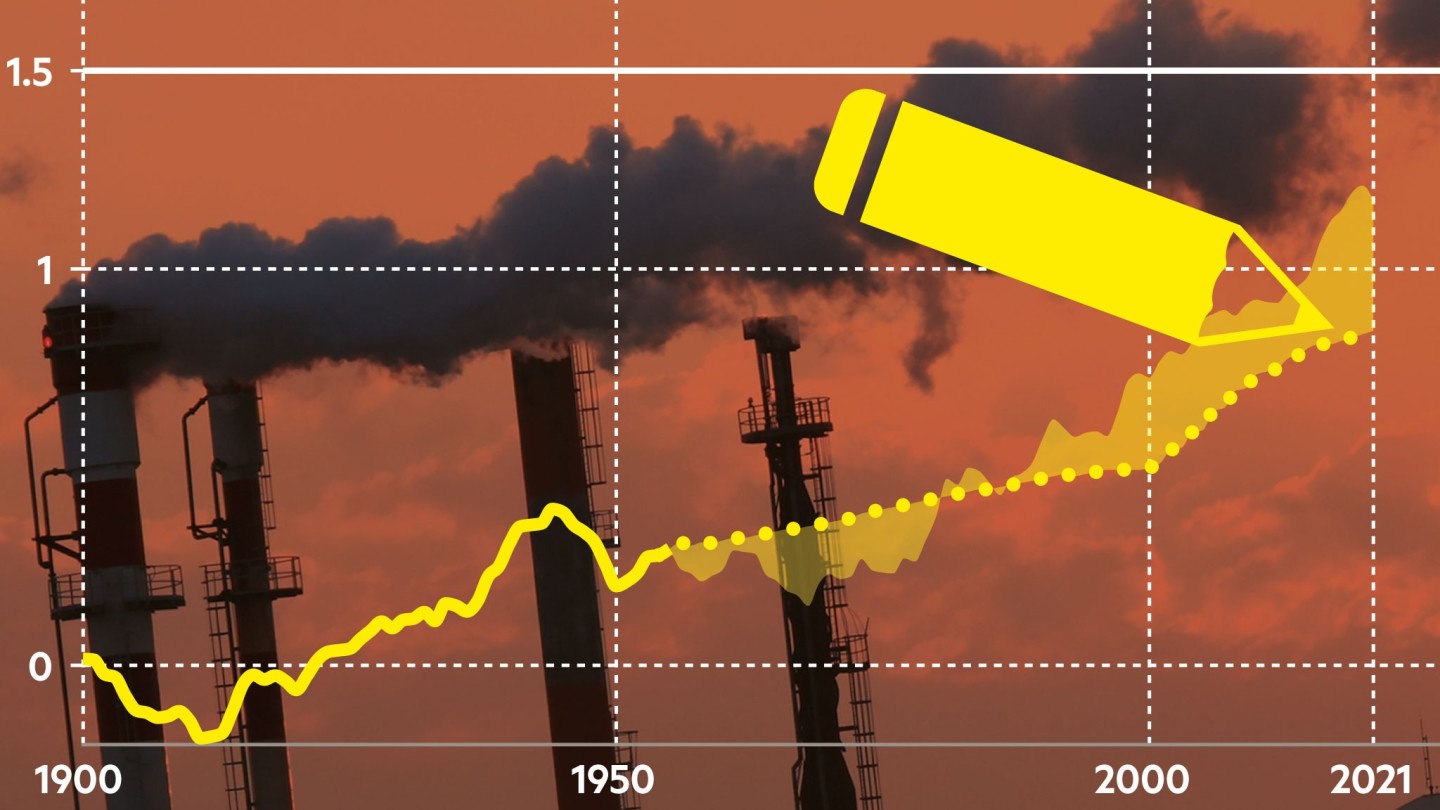
Simply sign up to the Climate change myFT Digest -- delivered directly to your inbox.
Understanding the scale of climate change involves looking at data — from measuring the planet’s vital signs to monitoring changes in human activity.
For all the data we now see reported routinely, how much knowledge have you retained? The charts below are incomplete — see how accurately you can fill in the missing information in four key areas being discussed at COP26.
1. Temperature
The 2015 Paris agreement aims to limit the rise in mean global temperature to well below 2C above pre-industrial levels, ideally to 1.5C. But how far along that path are we already? Try drawing the line for global temperature relative to the pre-industrial average.
Some climate experts criticise the baseline of “pre-industrial levels” for being vague and many prefer a different benchmark. For this chart, the data were initially calculated relative to a 1981 to 2010 baseline and offset by 0.69°C, which is the best estimate difference for the 1850-1900 period cited by the UN scientific body, the IPCC.
2. Emissions
To limit temperatures, global emissions must be reduced as soon as possible and reach net zero by the middle of this century. Notably absent from COP26 is China. Try to draw that nation’s emissions (the same data is given for the US as a reference point).
You can keep up to date with the latest country emissions data on the FT climate tracker.
3. Energy mix
A key factor in reducing emissions is moving the planet’s energy mix away from fossil fuels towards cleaner, renewable sources. Try drawing the combined line for the use of solar and wind power to see how they compare to the dirty trio of coal, gas and oil.
4. Funding
An important provision in the Paris agreement is for developed richer countries to provide funding for developing poorer nations to support mitigation and adaptation efforts. Bilateral aid, or direct support from one country to another, has been patchy so far.
Here is the direct support from six of the G7 countries, the world’s wealthiest liberal democracies. Try completing the chart by drawing the line for direct US support to other nations.
Follow @ftclimate on Instagram
Climate Capital

Where climate change meets business, markets and politics. Explore the FT’s coverage here.
Are you curious about the FT’s environmental sustainability commitments? Find out more about our science-based targets here
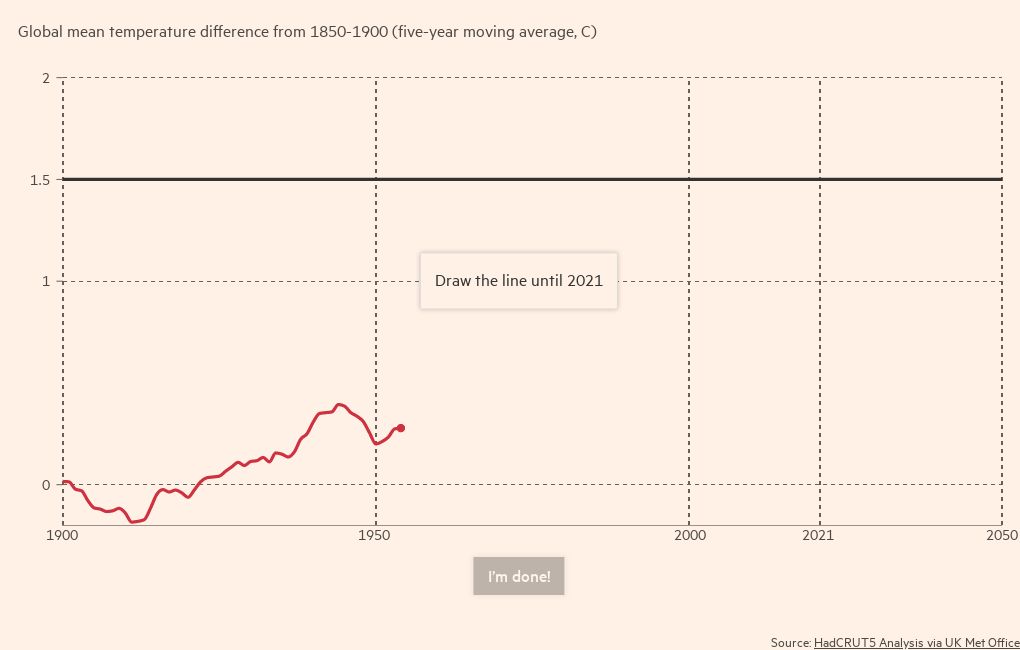
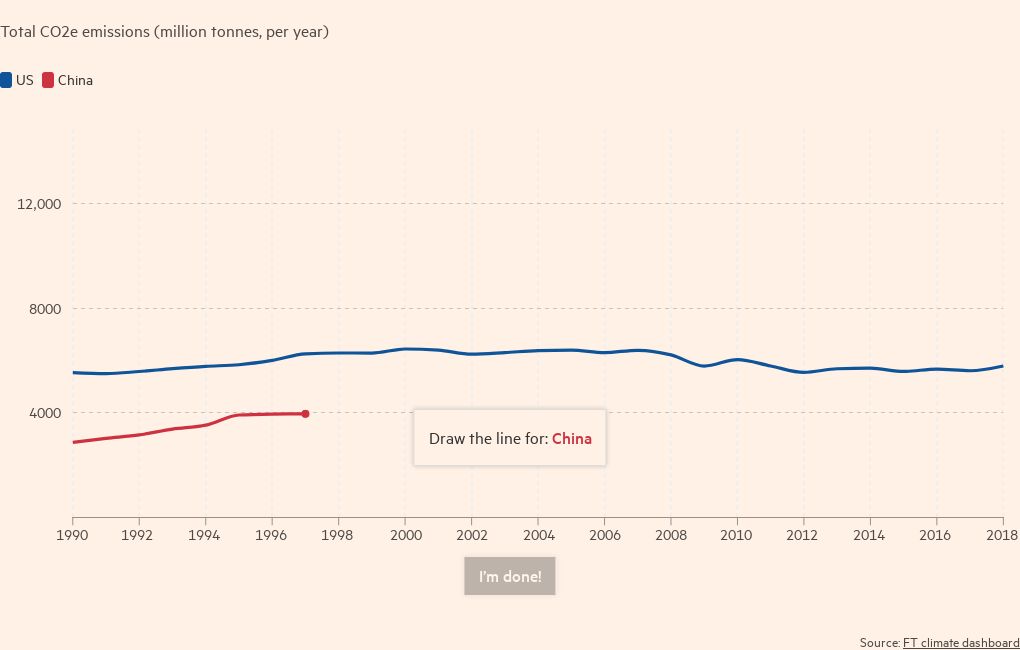
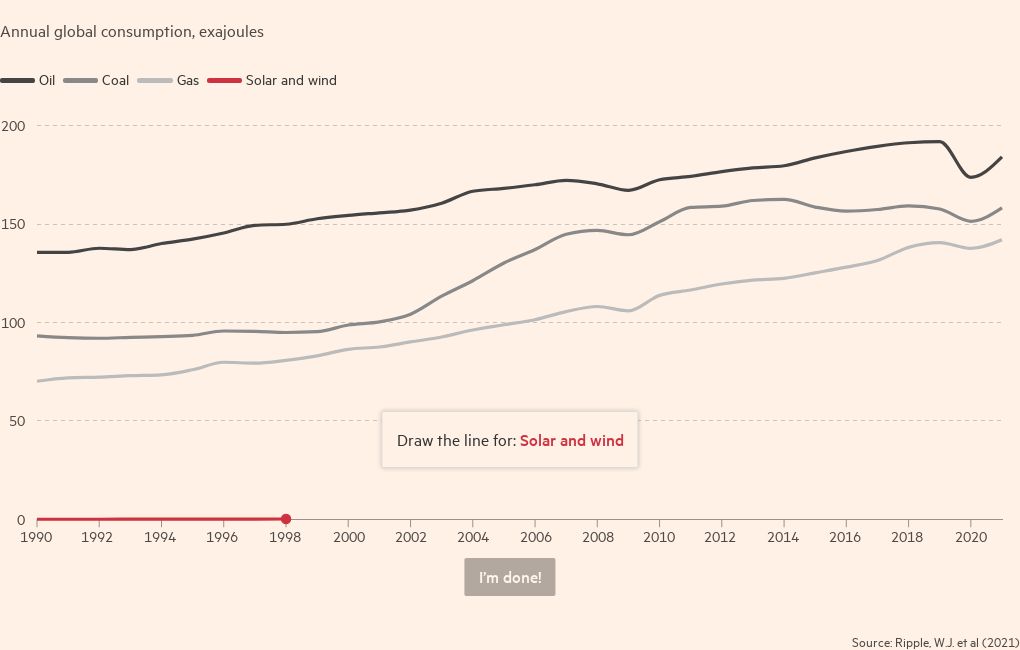
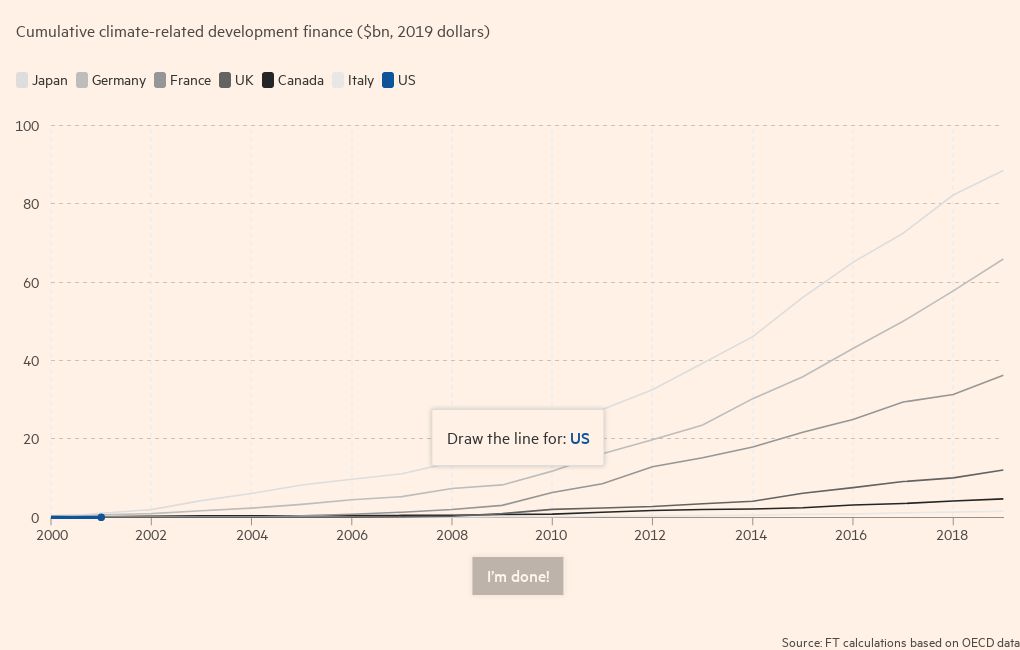
Comments